As a holistic veterinarian and passionate dog lover, I’ve always been intrigued by the diversity of dog breeds from around the globe. Nevertheless, Scotland holds a special place in my heart for its offering of some of the most distinctive and charming breeds. Scottish dog breeds are a remarkable blend of character, beauty, and history, each with a unique story to tell.
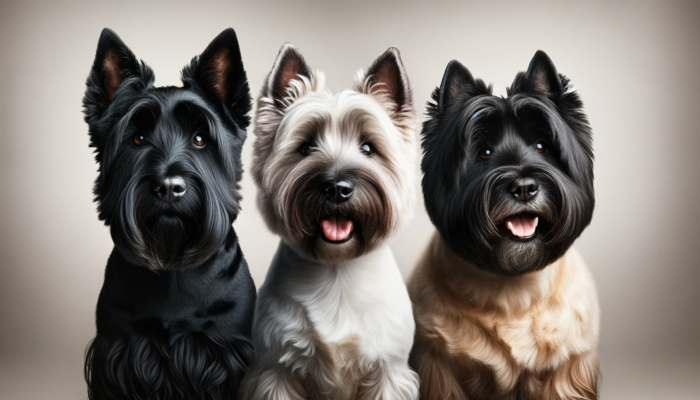
Scotland’s canine clans speak volumes about the nation’s history, culture, and terrain. From the rugged Highlands to the pastoral Lowlands, these breeds were developed to meet specific needs – whether for herding, hunting, or companionship. The importance of Scottish dog breeds in history cannot be understated. These dogs were often the trusted companions of warriors, the efficient workers of farmers, and the cherished pets of nobility.
Whether you’re a potential dog parent eager to find out more about these breeds, a history enthusiast curious about their origins, or simply a dog lover, read on. You’re about to embark on a fascinating journey into the world of Scottish dog breeds, their histories, and what makes them so endearing and unique.
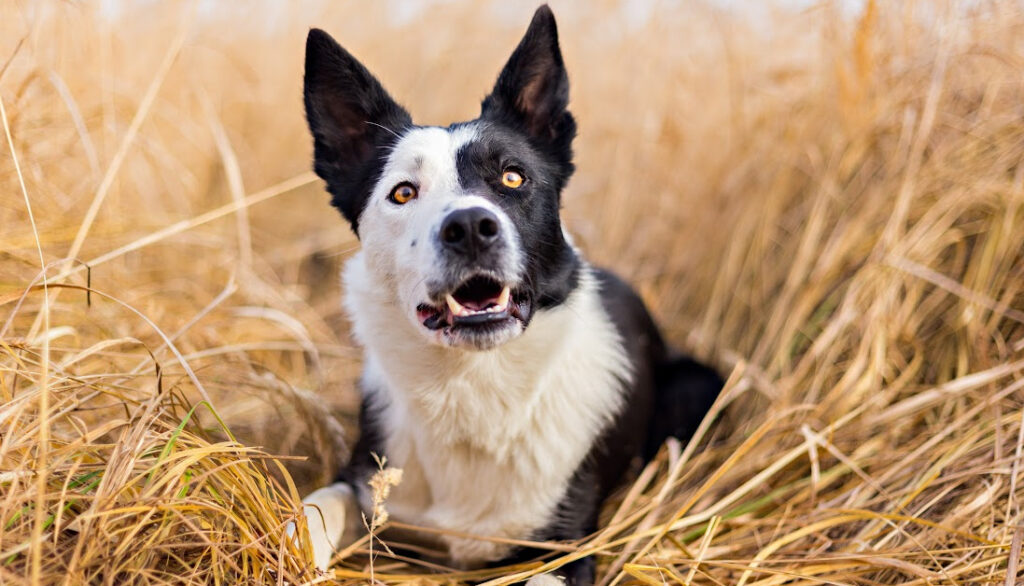
Welcome to an exciting journey through Scotland, not through its famous lochs, castles or highlands, but through the adorable and beloved representatives of its canine clans – the Scottish dog breeds. If you’ve ever been mesmerized by their charm, intelligence, and agility, you’re not alone. These breeds are not just popular show dogs, but also possess a rich history and unique characteristics that make them stand out.
Top Scottish Dog Breeds
Let’s embark on a fascinating exploration of some of the top Scottish dog breeds:
- Scottish Terrier: Known for their distinctive eyebrows and beard, these dogs are true terriers at heart – feisty, independent, and bold.
- Border Collie: Renowned as one of the most intelligent breeds, Border Collies are exceptional herding dogs, agile, and trainable.
- Shetland Sheepdog: Often mistaken for a small Rough Collie, Shelties are intelligent, agile, and make excellent family pets.
- Scottish Deerhound: Once the royal dog of Scotland, these breeds are large, friendly, and known for their unique rough coat and dignified bearing.
- Cairn Terrier: Known as Toto from the Wizard of Oz, they are small, sturdy dogs with a shaggy coat, known for their playful and cheerful demeanor.
- West Highland White Terrier: Often known as Westies, they are small, friendly, and energetic, with a distinctive white coat.
Unique Characteristics of Scottish Breeds
What makes these Scottish dog breeds unique and desirable to dog lovers globally? It’s their distinctive characteristics:
- – Adaptability: Scottish breeds are highly adaptable, comfortable both in the bustling city environment and tranquil countryside. Their flexibility stems from their historical roles as working dogs in diverse Scottish landscapes.
- – Intelligence: Many Scottish breeds, like the Border Collie and Shetland Sheepdog, are renowned for their intelligence. Such breeds are quick learners, highly trainable, and often excel in obedience and agility trials.
- – Courage and Tenacity: Scottish breeds, particularly the terriers, are known for their bold and tenacious nature. They were bred to be tenacious vermin hunters, and even the smallest of them can be surprisingly fearless.
- – Loyalty: Scottish breeds are renowned for their loyalty and protective nature towards their families. They form strong attachments and are often great companions.
- – Physical Distinctiveness: Scottish breeds offer a diverse range of physical traits, from the rough and shaggy coats of the Scottish Deerhound and Cairn Terrier to the silky smooth coat of the Shetland Sheepdog.
From the highlands to the lowlands, from the royal castles to the humble shepherd’s home, Scotland’s canine clans have carved a distinguished place in the hearts of dog lovers worldwide. Their rich heritage, diverse characteristics, and unique temperaments make Scottish dog breeds a beloved and respected integral part of Scotland’s vibrant history and culture. Their popularity continues to grow, and whether you are a prospective pet parent or an ardent dog lover, there’s a Scottish breed bound to steal your heart.
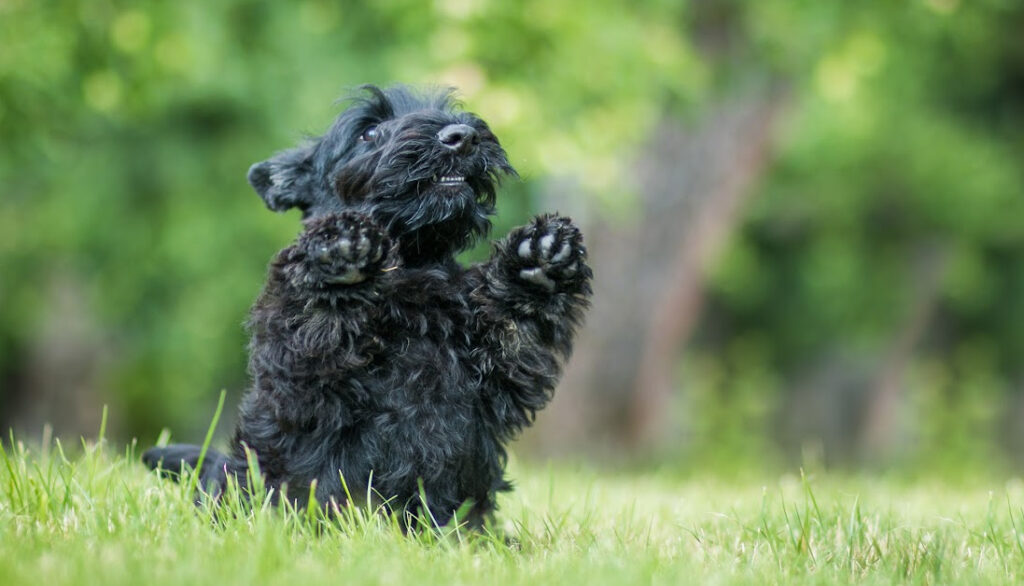
Scottish Terrier: A Classic Scottish Breed
Scotland, known for its rugged landscapes and rich history, is also the birthplace of several distinguished dog breeds. One such breed that stands tall, with a personality larger than its size, is the classic Scottish Terrier.
History of the Scottish Terrier
Scottish Terrier, affectionately known as “Scottie,” has a history dating back to over 500 years. Originating in the highlands of Scotland, these dogs were initially bred for hunting vermins such as rats, otters, and even badgers. Their small size and muscular build made them perfect for digging into burrows and driving out the prey, a trait that remains intact even today.
Scottish Terriers have always been loved for their tenacity and grit, which is why they became popular across Scotland and the British Isles. However, it wasn’t until the late 19th century that Scotties began to gain recognition in other parts of the world. One significant contributor to their worldwide fame was their association with high-profile personalities, including Queen Victoria and several U.S. Presidents.
Traits and Temperament of the Scottish Terrier
Scotties, often mistaken for a small version of an Airedale Terrier, have a distinct appearance that sets them apart from other scottish dog breeds. They boast a wiry, weather-resistant coat that comes in a range of colors – from black, brindle to wheaten. They have a compact and sturdy body which speaks volumes of their strength. Their sharp, pointed ears and piercing gaze encapsulate their alert and intelligent nature.
When it comes to their temperament, Scottish Terriers are known for their independent, bold, and confident demeanor. Despite their small stature, they are incredibly brave and protective, which makes them excellent watchdogs. Scotties are also known for their stubborn streak – they are not easily swayed from their point of view or what they want to do.
However, these dogs are not just all tenacity and toughness. They are also incredibly loyal and affectionate towards their families. With proper socialization, they can get along well with children and other pets. It’s important to note, though, that these dogs have a high prey drive, owing to their hunting background, so care should be taken around smaller animals.
Scottish Terriers are intelligent and love to engage in tasks that stimulate their mind. They thrive on puzzles, obedience training, and even agility courses. However, their independence means they can be a bit challenging to train. A patient and consistent approach works best with these dogs.

Border Collie: Scotland’s Intelligent Breed
Among the various Scottish dog breeds, the Border Collie deserves a special mention. Often touted as the most intelligent of all dog breeds, this canine hails from the border region between England and Scotland, hence the name Border Collie.
Origin and History of the Border Collie
The Border Collie’s lineage traces back to the Roman Empire. However, it was not until the 19th century that the breed gained recognition for its exceptional herding abilities. The Border Collie’s ancestors were brought to Scotland by the Romans, where they were crossed with native dogs. This resulted in smaller, quicker, and more agile dogs, perfect for the rough Scottish landscape and the task of herding sheep.
One of the most famous Border Collies ever, Old Hemp, further solidified the breed’s image. Born in 1893, Old Hemp’s herding style was less forceful and more mental, making it an instant success. Many believe that most modern Border Collies can trace their lineage back to Old Hemp.
Understanding the Border Collie’s Nature and Temperament
Border Collies are renowned for their intelligence, energy, and work ethic. These dogs are incredibly trainable and excel in various sports and tasks. They have a keen instinct for herding and are often employed for this purpose even today.
- Intelligence: Border Collies are known for their exceptional intelligence. They have an impressive capacity to learn new commands and tricks, making them a favorite in obedience competitions.
- Active Nature: These dogs are energetic and need regular physical and mental stimulation. They thrive in environments where they can run, play, and exercise their sharp minds.
- Work Ethic: The Border Collie’s herding instincts are strong. They love having a job to do and excel in tasks that challenge their intelligence and agility.
- Temperament: Border Collies are often reserved with strangers but are incredibly loyal and affectionate with their families. They get along well with children and other pets, given proper socialization.
In a nutshell, if you’re looking for a smart, active, and affectionate companion, you can’t go wrong with a Border Collie. However, these dogs do need a lot of exercise and mental stimulation, making them more suited to active families and individuals.
So there you have it – the Border Collie, a true Scottish marvel that embodies intelligence, agility, and an endearing spirit. It’s no wonder that this breed has won the hearts of dog lovers worldwide!
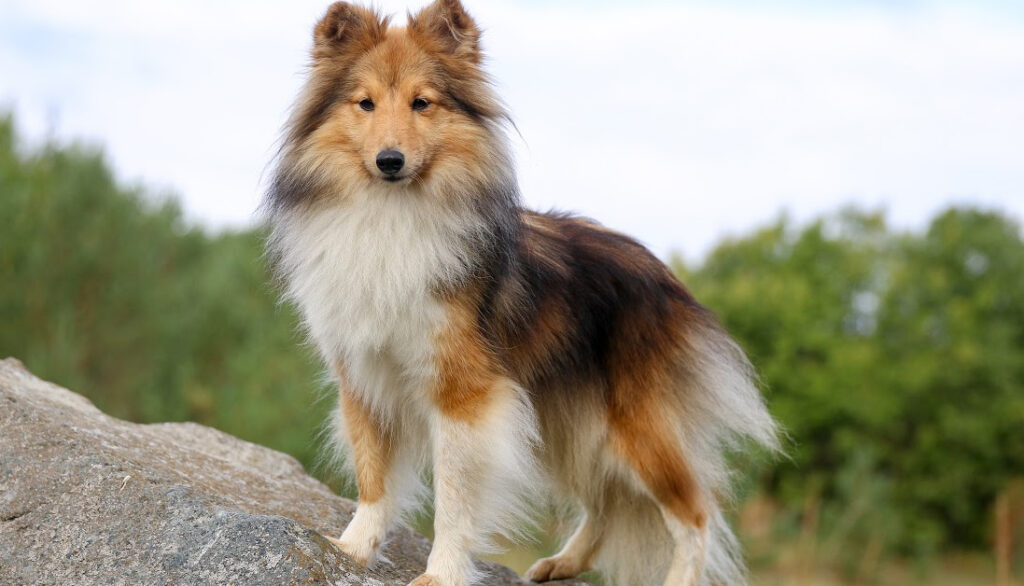
Shetland Sheepdog: The Agile Scottish Breed
When we talk about Scottish dog breeds, the Shetland Sheepdog, often affectionately referred to as the “Sheltie,” is a breed that certainly deserves our attention. With its striking resemblance to a small Rough Collie, this breed is known for its agility, intelligence, and warm-hearted nature.
Background and History of the Shetland Sheepdog
The Shetland Sheepdog, as the name suggests, hails from the Shetland Islands of Scotland. These islands, known for their harsh climate and rugged terrain, have given birth to a number of hardy breeds, both in livestock and dogs. The Sheltie, primarily bred for herding and protecting sheep, is no exception.
The breed’s history dates back to the 1700s. The Sheltie’s ancestors were a mix of local Shetland dogs, Scandinavian herding dogs, and possibly some Rough Collie, introduced in the later part of the 19th century. The Sheltie was bred to be smaller than other herding dogs, to match the smaller size of the Shetland livestock. The breed was officially recognized by The Kennel Club in the UK in 1909, and by the American Kennel Club in 1911.
Characteristics and Behavior of the Shetland Sheepdog
The Shetland Sheepdog is a small to medium-sized dog, standing between 13 to 16 inches at the shoulder. They have a thick double coat, with a mane of fur around the neck, giving them a “lion-like” appearance. Their coat colors vary, but the most common are sable, black, and blue merle.
Shelties are known for their intelligence and agility. They excel in obedience, herding, and agility trials. Their herding instincts are still strong, and they may try to herd children or other pets in a household. Shelties are also known for their vocal nature, often barking to alert their family of anything unusual.
When it comes to behavior, Shelties are often described as gentle, sensitive, and good-natured. They form strong bonds with their families and tend to be reserved around strangers. They are highly trainable and eager to please, making them a joy to work with for both novice and experienced dog owners.
Shelties are generally healthy dogs, but they can be prone to certain genetic conditions like hip dysplasia, thyroid disease, and eye problems. Regular check-ups with a vet and a healthy diet can help ensure a long, happy life for this lovely Scottish breed.
In summary, the Shetland Sheepdog is a wonderful representative of Scottish dog breeds. Their rich history, combined with their intelligence, agility, and loving nature, make them a popular choice for families, farmers, and dog sport enthusiasts alike. If you’re considering adding a Sheltie to your home, you’re in for a loyal, loving, and lively companion.
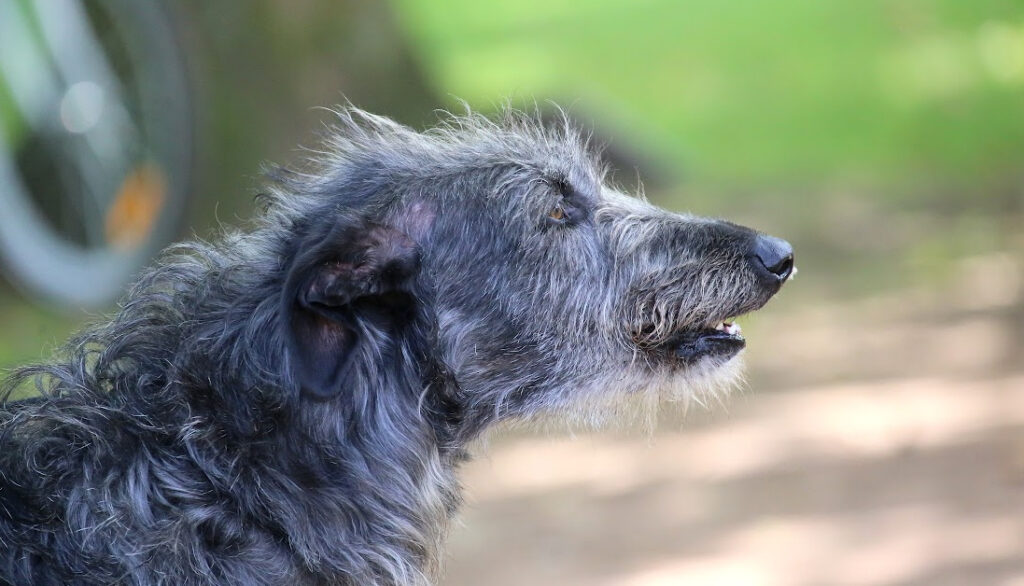
Scottish Deerhound: The Royal Dog of Scotland
Historical Significance of the Scottish Deerhound
As we delve deeper into the rich tapestry of Scottish dog breeds, we cannot overlook the majestic Scottish Deerhound. This elegant breed, often referred to as the “Royal Dog of Scotland,” carries a historical significance that truly resonates with Scotland’s past.
The Scottish Deerhound’s lineage is believed to trace back to the greyhound-like dogs depicted in ancient Celtic art. These dogs were treasured by the Scottish Highland clans, and they found their calling as efficient deer hunters. This is where the breed acquired its name. These hounds were so highly valued that, during the Middle Ages, owning a Scottish Deerhound was a privilege reserved for the nobility. It was said that a nobleman’s rank could be determined by the number of Deerhounds he owned!
The breed had a significant role in deer hunting across the rugged Highland terrains, which led to their prominence. Unfortunately, with the decline of deer hunting in the late 18th century, the breed’s numbers also fell drastically. However, thanks to dedicated breed enthusiasts, the Scottish Deerhound breed was revitalized and continues to charm dog lovers today.
Traits and Personality of the Scottish Deerhound
Stepping away from the history books and looking at the Scottish Deerhound today, you’ll find a dog breed that’s as regal in character as it is in appearance. Known for their tall, wiry frame and gentle demeanor, the Scottish Deerhound is the epitome of a ‘gentle giant.
One look at their powerful build and you might be tempted to think of them as robust and rowdy dogs. However, the truth couldn’t be more different. Scottish Deerhounds are calm and docile creatures. They enjoy a quiet lifestyle, with plenty of room to stretch their long legs.
This breed is known for its friendly and affectionate disposition. They bond deeply with their families and display a patient and gentle attitude towards children. Though not notably ‘barky’, they alert their owners to anything unusual, showcasing their natural inclination to guard.
Despite their aristocratic lineage and imposing stature, Scottish Deerhounds aren’t overly demanding when it comes to grooming, exercise, or training. However, due to their size, they require a spacious living environment. They thrive in homes with large yards, where they can indulge in their natural instinct to chase and run.
In essence, owning a Scottish Deerhound is a unique experience, a blend of royalty, history, and affectionate companionship. While their size might demand a bit more space and care than some other breeds, the love and loyalty they return make every bit of it worthwhile. If you’re a dog parent seeking a gentle, loving, and somewhat lazy couch companion with a royal lineage, the Scottish Deerhound might just be your perfect match.
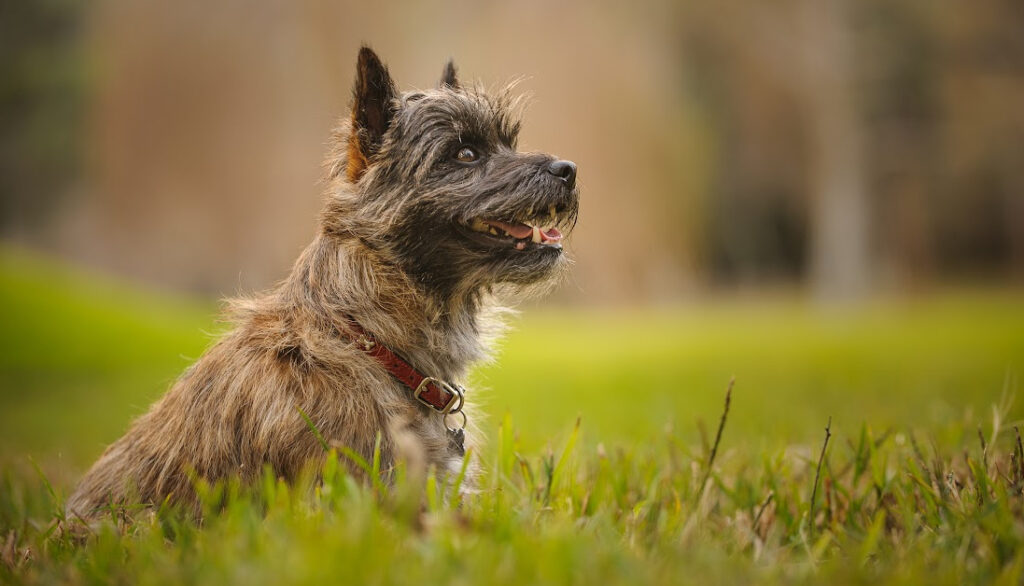
Cairn Terrier: The Hardy Scottish Breed
Origin and History of the Cairn Terrier
Among the numerous Scottish dog breeds, the Cairn Terrier holds a special place. Named after the rock piles (or cairns) commonly found in the Scottish Highlands, Cairn Terriers have a long history shaped by Scotland’s rugged landscapes. These dogs were originally bred for hunting and were adept at chasing prey, like rats and foxes, out of their rocky hideaways.
The origins of the Cairn Terrier can be traced back to the 1600s, making it one of the oldest known terrier breeds. They were initially considered part of the general “terrier” breed, grouped with other Scottish Terriers such as the West Highland White and the Scottish Terrier. However, the Cairn Terrier was recognized as its own breed in the early 20th century, mainly due to its unique hunting abilities and distinguishing features.
The Cairn Terrier’s fame transcended borders when one of its kind, a little dog named Terry, played Toto in the beloved movie, “The Wizard of Oz.” Since then, the breed’s popularity has grown, and it is now a well-loved breed worldwide.
Understanding the Cairn Terrier’s Traits and Temperament
Cairn Terriers are renowned for their hardy nature and boundless energy. They are small but sturdy, with strong muscles and a weather-resistant coat that comes in various colors, including black, gray, and red. They have expressive eyes and a shaggy appearance that adds to their charm.
Their temperament is a blend of tenacity, courage, and curiosity. They are known for their playful and affectionate nature, making them perfect for families with children. However, their strong prey drive, a trait necessary for their historical hunting role, remains intact. Thus, they need to be watched around small pets like hamsters or rabbits.
Despite their small size, Cairn Terriers are big on personality. They are intelligent and quick learners, but their independent streak can sometimes make training a challenge. They respond best to positive reinforcement techniques and plenty of mental stimulation.
Like many Scottish dog breeds, Cairn Terriers are also known for their loyalty. They form close bonds with their human families and can be quite protective. They make excellent watchdogs, always alert and ready to defend their territory.
Cairn Terriers require moderate exercise to keep them healthy and happy. Daily walks combined with play sessions will help burn off their energy. However, due to their inherent digging instinct, they may need a securely fenced yard to prevent them from digging under barriers.
In a nutshell, the Cairn Terrier’s hardy nature, playful disposition, and loyalty make them a wonderful addition to any family. Adopting a Cairn Terrier means bringing a bit of the Scottish Highlands into your home, along with a loyal friend for life.
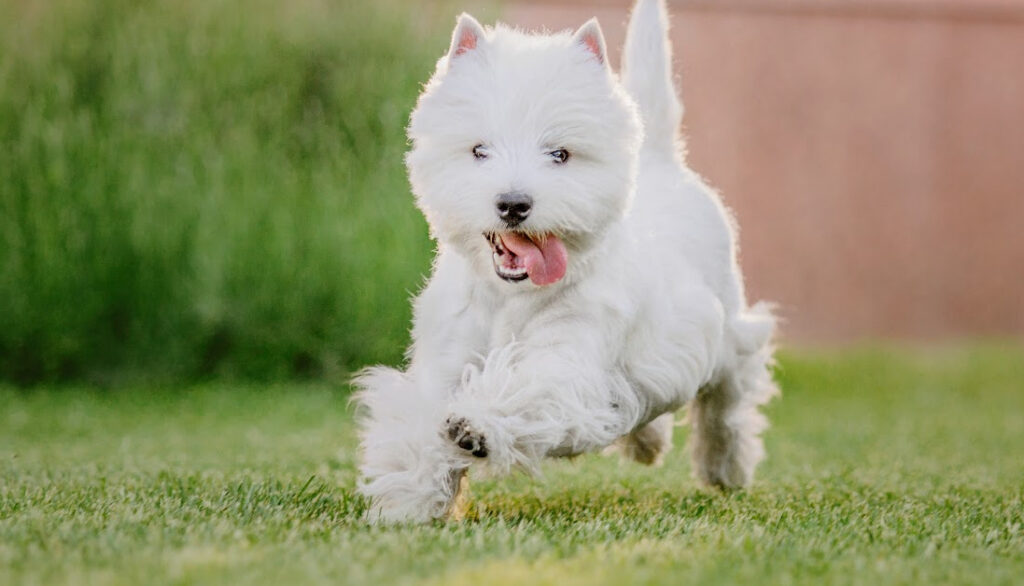
West Highland White Terrier: The Iconic Scottish Breed
Background and History of the West Highland White Terrier
The West Highland White Terrier, affectionately known as the Westie, is a beloved breed that hails from the rugged terrain of Scotland. The breed’s history is steeped in Scottish folklore and tradition, making them one of the most iconic Scottish dog breeds.
Originating in the 18th century, the breed was developed for the purpose of hunting foxes, badgers, and other small game. Their distinctive white coat was selectively bred to make them easily identifiable in the field, protecting them from mistaken harm during hunts.
The breed has certainly come a long way from their game hunting days. Today, Westies are known for gracing the lap of dog lovers, melting hearts with their playful charm and undeniable cuteness.
Characteristics and Behavior of the West Highland White Terrier
When it comes to the West Highland White Terrier, their appearance is as charming as their personality. Standing at just 10 to 11 inches tall, these small dogs are packed with personality. With their bright, almond-shaped eyes, erect ears, and a coat that’s as white as snow, it’s hard not to fall in love with these adorable pups.
- Temperament: Known for their lively and jovial personality, Westies are confident, curious and always ready for an adventure. They love to play and are known for being friendly and sociable, both with humans and other dogs.
- Intelligence: Don’t let their cute faces fool you. Westies are smart and quick learners. This makes them responsive to training, although their stubborn streak may sometimes make it a challenge.
- Loyalty: Westies are known for being incredibly loyal to their human families. They tend to form tight bonds with their owners, and can often be protective.
- Energy Level: As descendants of hunting dogs, it’s no surprise that Westies are energetic and love to be kept busy. Regular walks and playtime are necessary to keep these little bundles of energy happy and healthy.
Having a West Highland White Terrier in your life is like having a little piece of Scotland with you wherever you go. Their charming personalities, coupled with their distinctive looks, make them an ideal companion for anyone who is up for the adventure that comes with these spirited dogs.
So, if you’re looking to add a dash of Scottish charm to your life, a Westie might just be the perfect fit. Whether you’re exploring the great outdoors, or simply curling up on the sofa for an evening in, these little dogs are sure to bring a smile to your face.
Frequently Asked Questions
1. What are some popular Scottish dog breeds?
There are several popular Scottish dog breeds, including the Scottish Terrier, West Highland White Terrier, Skye Terrier, Cairn Terrier, and the Border Collie.
2. What is the history of Scottish dog breeds?
Scottish dog breeds have a rich history, often tied to the specific regions of Scotland from which they originate. Many were bred for specific tasks such as hunting, herding, or companionship.
3. Are Scottish dog breeds good for families?
Many Scottish dog breeds are known for their friendly and loyal nature, making them great family pets. However, each breed has its own unique characteristics and needs, so it’s important to research and choose a breed that fits well with your family’s lifestyle.
4. How do I care for a Scottish dog breed?
Caring for a Scottish dog breed involves regular exercise, a balanced diet, regular vet check-ups, and plenty of love and attention. Some breeds may also require regular grooming.
5. Where can I learn more about Scottish dog breeds?
There are many resources available to learn more about Scottish dog breeds, including books, online resources, and local breed clubs or organizations.
Dr. Candy, a holistic veterinarian and certified raw dog food nutrition specialist, graduated from Oklahoma State University in 2009 with a DVM and has since specialized in companion animal nutrition, advocating for species-specific diets. With a background in wildlife rehabilitation and oil spill response, she combines holistic health and conventional medicine in her unique approach to treating chronic diseases, allergies, and autoimmune conditions in pets. As the owner of a veterinary practice in Colorado and an author, Dr. Candy is dedicated to educating pet parents and improving the health and happiness of animals.




